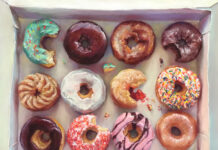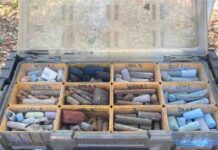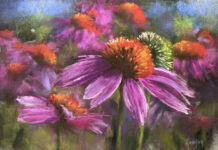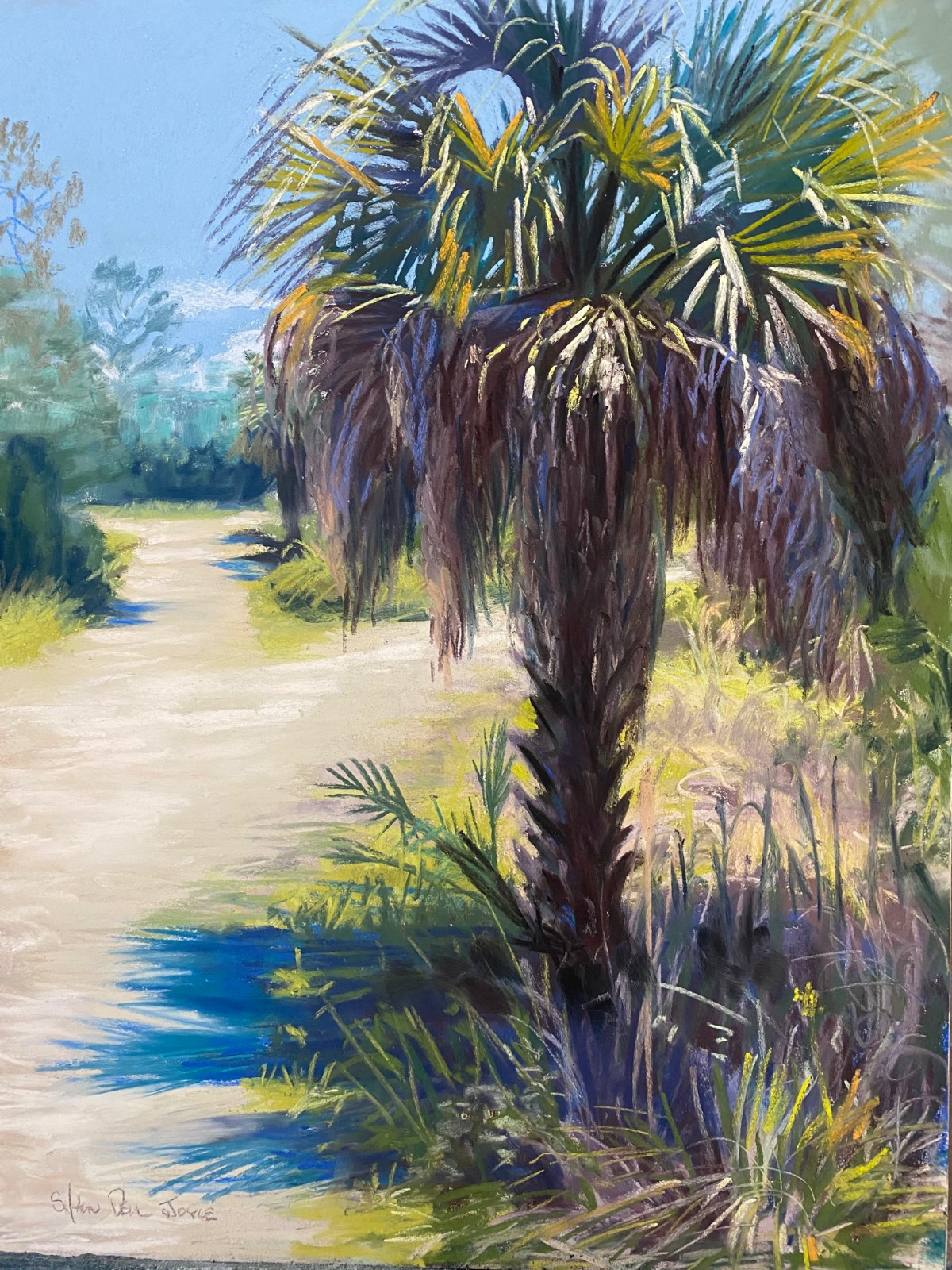
Shawn Dell Joyce has two studios — a dedicated lanai (Florida-speak for an enclosed porch) and a smaller indoor studio. With ventilation assured, and dust easier to filter out, an outdoor studio is a good fit for a pastel artist. To protect her pastels, she stores them in a set of weatherproof cabinets. Her easel is mounted on a taboret with rustproof storage. She uses the indoor studio mainly as a recording and broadcasting studio for her online classes.
Joyce uses a combination of pastels, but mostly Rembrandt for underpainting and Mount Vision Pastels for adding layers of rich color. She uses her hands to blend, donning liquid gloves as a barrier cream to protect herself from toxic pigments. She works exclusively on Ampersand Pastelbord.
THE ARTIST’S PROCESS
Joyce starts with a thumbnail sketch that identifies at least five values, as well as the focal point. “I simplify the landscape into abstract blocks of value and color,” she says. “The focal point is always where the darkest dark and lightest light meet. It’s important to be aware of this and make sure you put the focal point(s) in the most advantageous place.”
Next, Joyce makes a quick color study to lay out her palette. She may bring a hundred pastels to a plein air site, but only uses a handful of sticks for each painting.
“I make a color study to try out the colors, then separate the pastels I’ve chosen in an easel box,” says Joyce. “This is my VIP seating area, and only the pastels that will be used in the painting get to hang out there.” Joyce has a Sienna pastel box that attaches to her En Plein Air Pro easel. The box has values from 5 to 1 numbered on the side, and she sets up her pastels according to value. Most often, Joyce paints methodically from dark to light, or from 5 to 1.
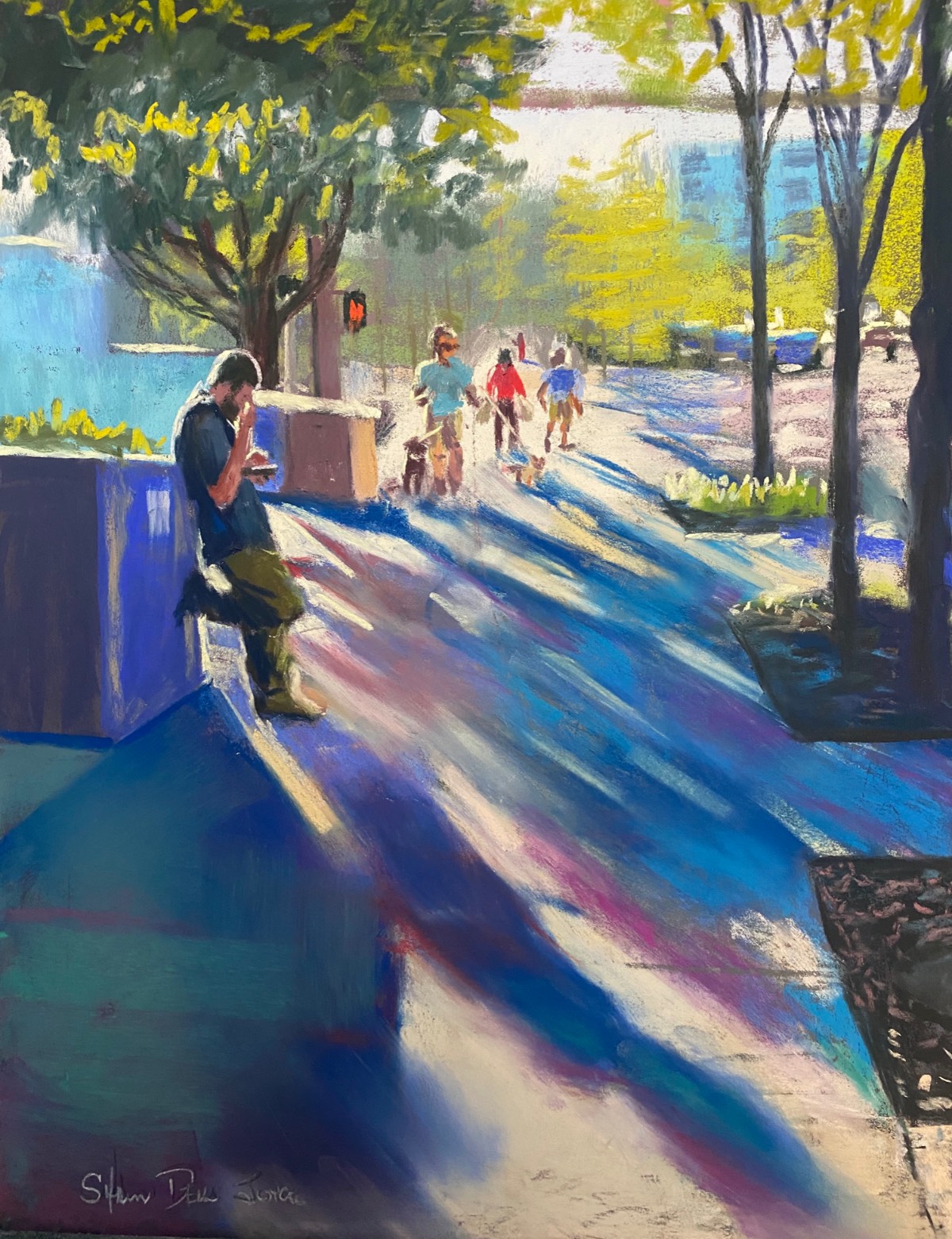
Once her palette is laid out according to her color study, Joyce is ready to begin painting. She paints quickly and methodically, working a large surface in under two hours so that she captures the light at that particular moment. Her typical plein air surfaces are 16 x 20, 13 x 36, and 18 x 24 inches.
“Twenty-five years of plein air work have given me a confident hand,” she says. “I can be accurate and quick on location, then take the painting home and live with it for a few days. This helps me see areas that need a little ‘pop’ of color or edges that may need to be softened or darkened.”
In the studio, Joyce’s technique is a little more relaxed. “I still start out with a value sketch and color study, but often will do these days ahead of time. Also, I don’t always work from dark to light in the studio. Most often I work from back to front. I look at what is furthest away and start blocking in the distant sky and reflection.
“If I’m painting large (a typical studio painting is 24 x 36 inches), I may start with my surface flat instead of on the easel so I have maximum saturation of pigment into the tooth of the board,” says Joyce. She starts with large abstract shapes, covering the entire surface. “Once the pigment is in the tooth of the board, it’s easier to blend into it,” she notes. She then refines the shapes by scumbling and sometimes blending, especially cloud shapes in the sky.
DEMONSTRATION: Starting With Big Color Blocks

Step 1: Joyce uses the first layers of pastel (Mount Vision Pastels) to make large abstract shapes on a 24 x 36-inch Ampersand Pastelbord. She paints the water at the same time as she paints the sky. “Water usually reflects what’s in the sky, so while I have that color in my hand, I paint both. I vary my strokes for water and make the marks more horizontal, as water moves horizontally.” She reflects the cloud shapes in the water with long dark side strokes using the whole side of a Mount Vision Pastel stick.

Step 2: She then blends the edges, softening the light and making the tooth ready to receive more pastel. “Pastel is the best medium for capturing dramatic lighting effects because you can layer light over dark and scumble colors across each other without mixing them,” she says.

Step 3: She scumbles clouds across the bright skies, then it’s time to add the darks, such as the horizon line and the shoreline. At the horizon line, she indicates that there are two parts of an island that was split by a hurricane. Next, she adds the sea foam and waves, and finally the pipers catching the last glow of the sun’s rays. She refines edges but saves detail work for the birds.

Step 4: The artist creates the illusion of clouds reflected on the water with horizontal side strokes of the pastel stick. “I’m endlessly inspired by the ever changing light and landscape,” she says. “We artists are lucky to be able to capture this place, at this moment. We are seeing history unfold before us.”

“Pick one subject, and paint it 25 times.” At the time her mentor gave her this advice, Jill Stefani Wagner didn’t understand why, but she followed it anyway, and it changed her life. Now, she’s reaching out to you through Jill Stefani Wagner: Pastel Painting From Photos and sharing this foundational secret to her incredible success (along with a bunch more!).

